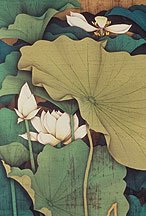This Month's News
This is the second month for our electronic newsletter, and we appreciate the feedback, which has been very positive. We are still learning the in's and out's of the software we are using. So please bear with us as we continue to make improvements.
Here are some hints about how to get the most out of this newsletter.
(1) The "Recent Posts" list on the left gives only the 10 most recent news items (or "posts"). It is not an index of all of our news items for the month. That's why you need to scroll all the way to the bottom to read them all.
(2) There also is some useful information in our previous months' newsletters. For example, the January newsletter has information on some art exhibitions at the Sackler and Freer Galleries, which are still underway. To read the January newsletter, click on "January 2006" under the heading "Archives."
(3) Finally, under each item, you will see the e-mail icon (symbol). If you click on it, you can send that particular item by email to a friend. For example, if you would like someone to know about an upcoming exhibition on Japan, just click on the icon, type in their email address, and hit the "send" key.


